Join Staff Writer Olin Bose in finding out more about the elevators of Morningside Heights.
Elevators are an integral part of Columbia’s campus. Due to our density and vertical buildings, almost everyone needs to use an elevator at some point, whether to get to their dorm or to a class. But we mostly take them for granted. How many elevators are there? When were they introduced? What do the elevator numbers represent, and what is the highest-capacity elevator? Through weeks of looking at newspaper archives, visiting every building, and riding many elevators, I have attempted to investigate all these and more.
A Brief History of Columbia’s Elevators
Columbia moved to the Morningside Heights campus in the 1890s. Out of the first six buildings, only Havemeyer, Schermerhorn, and University Hall (Now the Dodge Gym) had elevators, while Low, Physics (Fayerweather), and Engineering (Now Mathematics) did not. As new buildings were built, they included elevators, such as Livingston (now Wallach), Hartley, Hamilton, Journalism, and Avery. By 1931, the campus had 22 elevators.
At this point, most elevators on campus were manually operated by workers. Notably, some elevator workers, encouraged by students, went on strike in May 1936, briefly halting operations in 32 buildings.
In the 1950s, the manual elevators were being replaced with automatic ones. Eight were replaced in 1951. The dorms followed: John Jay in 1954, and Livingston and Hartley (alongside Pupin and Chandler) in 1956. Furnald’s two elevators were replaced in 1957. By 1959, the elevator in Hamilton was the only manually operated elevator on campus, finally switching in 1972.
Throughout the 1970s, 1980s and 1990s, many Spectator articles have been found decrying the elevators as old and broken-down.
Meanwhile, especially after the passage of the Americans with Disabilities Act in 1990, many wheelchair ramps and disability-only elevators were built on campus. These include Elevator #94, by Dodge Hall, (1982) which allows travel from College Walk to the top of the Low Steps, and have been built as recently as 2019, when Lift #182, a wheelchair lift that enables travel past the steps in front of the Math Building, was built.
As shown by the numbering, Columbia has had at least 182 elevators and lifts. I know where 115 of these numbered elevators are and have visited many of them.
Elevator Numbers and IDs
Each (or most) of the elevators on the Columbia campus, or Columbia-affiliated, has a unique number as well as a NYC ID. Having travelled around the campus looking for elevator numbers, they were added in an interesting (and rather inconsistent) pattern.
The ID of an elevator can be found either through the inside or the elevator or reverse lookup through the building’s address on the NYC building database.
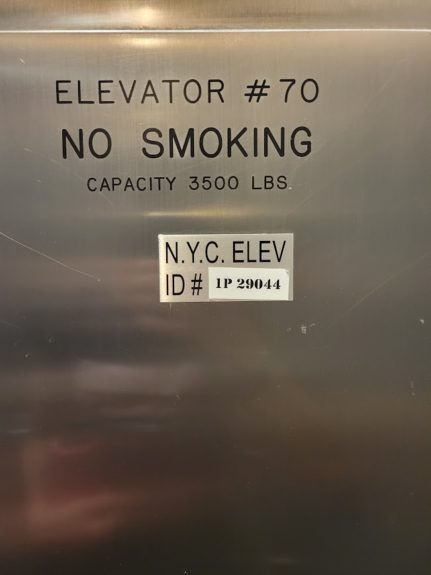
Each Elevator ID, such as Hartley’s “1P9513”, reveals the following:
- The first number represents borough (1=Manhattan, 2=Bronx 3=Brooklyn, 4=Queens, 5=Staten Island)
- The letter represents type of elevator. For example, P=Passenger, F=Freight, and W=Wheelchair.
- The next 4 or 5 numbers distinguish each elevator. For those built before 1913-1920, they represent the location of the elevator (Columbia’s are between 1P9512 and 1P9527, while nearby River has 1P9507), but afterwards, starting with about 1924, they are given in chronological order. For example, Dodge (built 1924) has elevators 1P13322 & 1P13323, and Wien (built 1925) has elevators 1P13389 and 1P13390.
- Freight elevators and wheelchair elevators have similar numbering systems.
Elevators in NYC need to have inspection certificates inside them, but Columbia holds them all in a different place. In 1978, “to prevent student vandalism”, the inspection certificates were held in their respective motor rooms. It seems that shortly after East Campus was built in 1979-1981, all of the elevator inspection certificates were moved to the new Office of Vertical Transportation which is currently in Room 230B of that building.
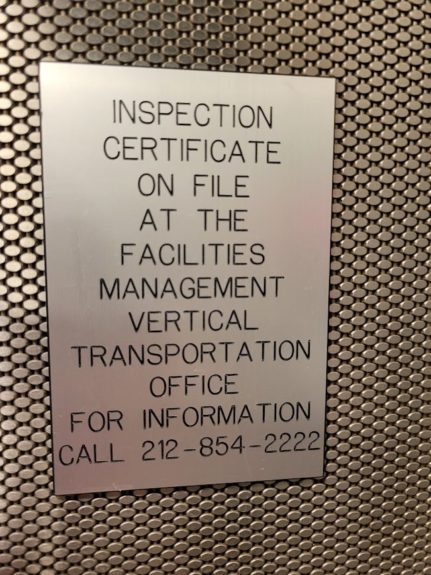
In order to keep track of each elevator, elevator numbers were assigned. Elevators that had already been installed were given a label with the number, while elevators replaced or installed afterwards have the number inscribed inside. Known elevators that currently do not contain numbers inscribed include Avery (#1), Kent (#24), Chandler (#50), and Mathematics (#64), putting them amongst the campus’s oldest currently standing. Other buildings later bought by Columbia currently without inscribed elevators include Watt (#57), River (#79), and both Knox Hall elevators (#163 and #164). Many buildings, like McBain (#30 & #150) and Hogan (#69), do have inscribed elevators because the elevators were replaced or added.
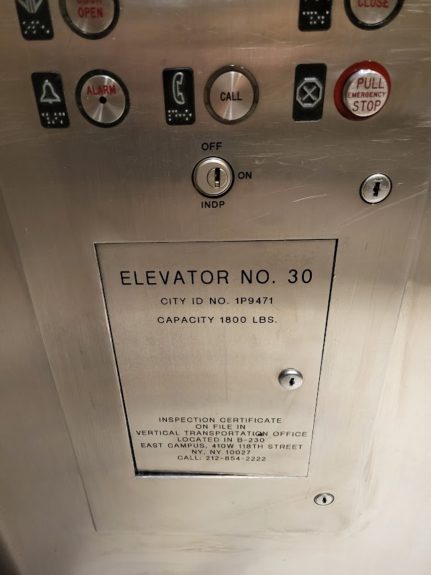
The Columbia elevators without numbers, such as the one in the Kraft Center, have their inspection certificates inside them or elsewhere in the building.
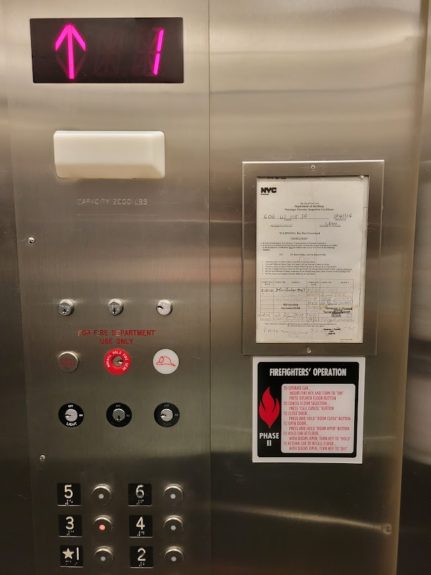
The numbering order of the elevators before East Campus (#88, #89, and #90) were done in a semi-alphabetical order. Numbers one through 46 were given in alphabetical order of the building, while the rest were done semi-chronologically. The final elevators numbered before East Campus (#84-#87) belong to Hartley and Wallach Halls. The system for these articles could be made an article into itself as I am still researching them.
The elevators added after those in East Campus (#88, #89, and #90) seem to have been numbered in chronological order. Elevator #91, was added in 1981, replacing two dumbwaiters in the John Jay Dining Hall kitchen. It can be seen today, behind Wilma’s Grill.
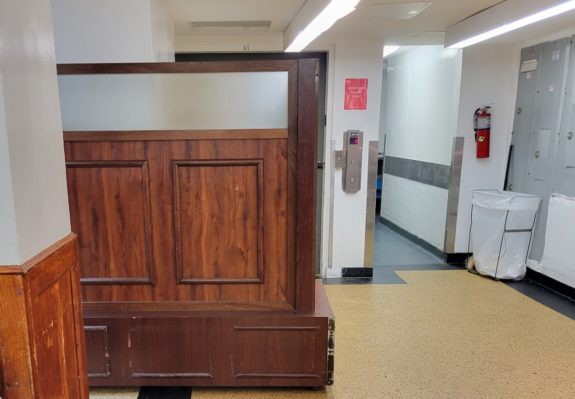
Number 94, the ADA elevator, was added in 1982 as mentioned earlier. Schapiro, built in 1987, has Nos. 98-100. The Americans with Disabilities Act of 1990 saw many wheelchair lifts made such as #116 in Hamilton and #120 in Earl. Further later buildings have correspondingly later elevator numbers such as CEPSR (1992; #122-126), Lerner (1999; #129, #132-137), and Northwest Corner (2010; #158-161).
Elevator Superlatives
The highest-capacity elevator on the campus is most likely the garage elevator behind Schermerhorn (#42), which, according to the NYC Database, has a capacity of 12,000 pounds.
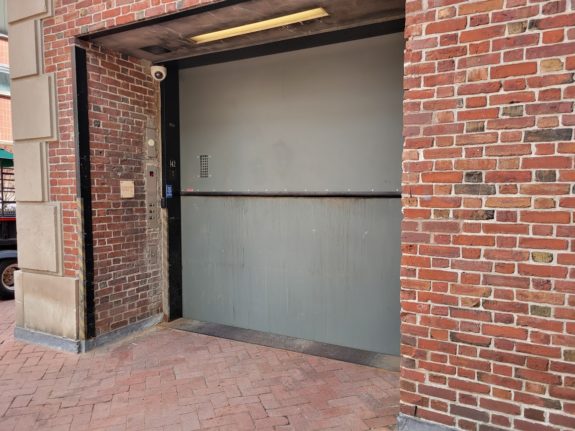
Next up is #124, the freight elevator in CEPSR, with a capacity of 10,000. Butler’s side elevators have a capacity of 5,000.
The lowest-capacity elevators include #180, a disability elevator going from Pupin’s 13th to 14th floors with a capacity of 1400. Many elevators have a capacity of 1500, including #24 (Kent), #67 & #68 (Avery Library basement), #46 (Woodbridge), and #6 & #7 (Butler Stacks).

The only elevators I visited that did not have digital screens on them indicating floors were #1 (Avery) and #24 (Kent), which put them amongst the campus’s oldest. (Even Hamilton has a screen!)
Conclusion
I hope that you have learned more about Columbia’s elevators. I certainly have more to add, which will be incorporated into a second piece (or more) later on.
Special thanks to Elijah Scheinson
All images via Author


 2 Comments
2 Comments
2 Comments
@Anonymous Love this! Also CEPSR has 5 elevators (122,123,124,125, and 126)? I know of four (two passenger, one freight, and the shuttle elevator to the gates). Also, I thought Northwest Corner has more than 4 elevators (158, 159, 160, 161), because there’s also the one in the library, on top of the three laboratory elevators and one freight elevator. Also, I think the River hall elevator doesn’t have a screen either, and I remember it was making some really loud scraping noises and there was even an elevator technician talking about a shoe being loose, and they shut down the elevator over the weekend, so that elevator might be pretty old. Anyway, this is very interesting! Looking forward to the next article
@Olin Bose Thanks for liking the article and your feedback!
* I made a typo; #122 is one of the wheelchair lifts in Schermerhorn. Only #123-126 are in CEPSR.
* I know of the NoCo library elevator, but I haven’t been able to get its number because I can’t go inside. I do know that its city ID is 1P46328 while the others are between 1P45728 and 1P45731.
* Thanks for your information about River!